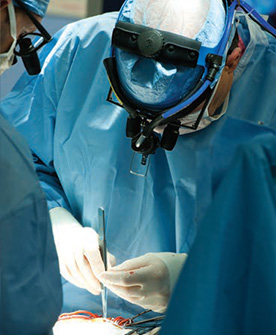Aortic Valve/Ross Procedure (Pulmonary Autograft)
When the aortic valve is so abnormal that it cannot be effectively repaired, a valve replacement operation may be recommended. Our surgeons perform a technically demanding surgery called the Ross procedure, in which the patient’s own normal pulmonary valve is used to replace the damaged aortic valve. The pulmonary valve itself is then replaced with a homograft (human tissue) valve. The homograft valve can be large enough to allow for growth and because it is not subjected to high pressure, it can last much longer in the position of the low pressure pulmonary valve. However, it is likely that it will eventually need to be replaced.

Once the homograft valve deteriorates (which takes years), it can often be dilated in the cath lab. And today, our interventional cardiologists can implant a new valve percutaneously into the homograft, avoiding another surgery.
The Ross operation is more complicated than aortic valve replacement with a tissue valve or mechanical valve. However, data have consistently shown excellent durability and long-term function of the pulmonary valve in the aortic position. Studies point to a 10-15 percent incidence of reoperation for pulmonary homograft degeneration over 10-15 years and a smaller incidence of reoperation on the new aortic valve.
Total Aortic Valve/Ross Procedure Volume = 43 2013-2016 |
NewYork-Presbyterian | STS National Benchmark |
| Ross & Ross-Konno | Ross & Ross-Konno | |
| Overall Hospital Discharge Mortality Rate | 0% | 2.7% |



